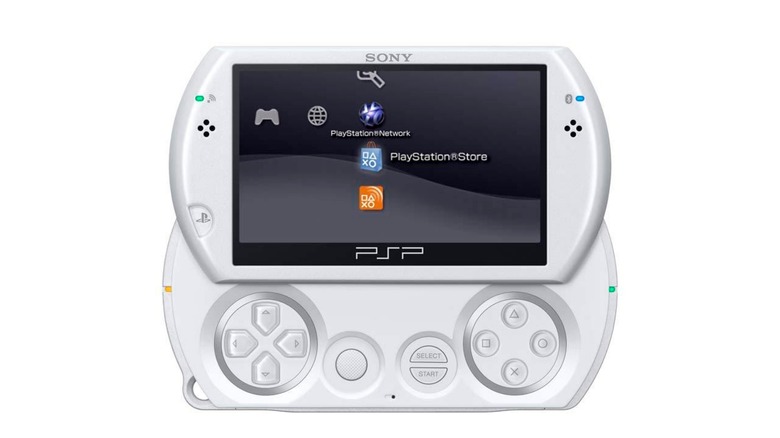Is Anyone Really Surprised The PSP Go Was A Failure?
When Sony launched the PSP Go in 2009, it was expected to be the next big thing by some fans. They said that it would capitalize on the growing downloadable-content trend, and gamers wouldn't even miss the UMD drive. More importantly, they said, with such future-focused features, it could justify its $250 price tag.
But then gamers actually got their hands on the device. And they quickly realized that all the so-called benefits of owning the PSP Go were, well, non-existent.
When discussing the reasons the PSP Go failed, it's hard to pinpoint a single issue. The device was rife with problems from the beginning that made it dead on arrival. And towards the end, it seemed that only Sony saw it as a worthwhile buy.
Take, for example, the exorbitant $250 price tag. At that rate, consumers expected much more than a device that would allow them to download games and play them while on-the-go. After all, for $50 more, they could get the most-capable gaming device on the market, Sony's PlayStation 3. Even after Sony reduced the PSP Go's price to $199, it was too expensive.
There was also the issue of games. Generally speaking, the library of titles available to the PSP Go were lackluster. And those that were actually dedicated to gaming on a PSP would have chosen Sony's traditional model, which supported a UMD drive, so they could get all the games available on the platform.
But it goes beyond the device's own shortcomings. It was available in a time when casual players were less likely to turn to portable devices, like the PSP or the DS, to satisfy their gaming needs. Instead, they took to Apple's App Store, found downloadable games, like Angry Birds, and enjoyed them from their iPhone. Android gamers have been doing that as of late, as well.
Simply put, casual titles are becoming more popular. And for the first time, traditional portables are being forced to actually worry about smartphones. Some of the more popular options, like the DS, have been able to thrive under those circumstances. The weakest of the bunch, including the PSP Go, have failed.
So, what can Sony learn from all this?
For one, the company needs to give itself a better chance of competing against Nintendo and smartphones by fairly pricing its upcoming NGP. It would also be a good idea if Sony acknowledges the threat that the competition poses and market the NGP around that.
But perhaps more than anything, Sony needs to learn to not take such giant leaps in the portable space without doing it the right way. The iPhone was a gamble, but Apple pulled it off by doing something special. The same can be said for the DS.
The PSP Go wasn't special in any way. And that, more than anything else, is why it failed.
